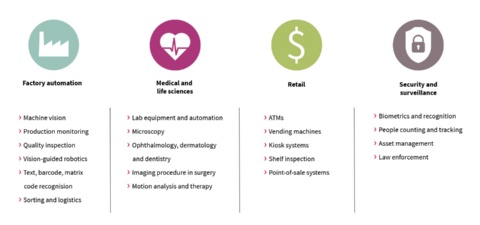EZ-USB™ SD3 USB 5 Gbps ストレージコントローラー
EZ-USB™ SD3 - programmable USB 5 Gbps to storage controller with SD/eMMC memories and SDIO device support
Infineon's EZ-USB™ SD3 is a USB 5Gbps to storage controller that allow developers to add storage to any USB port. It supports up to two independent storage ports which may be configured in any combination of SD, eMMC, or SDIO. The storage standards supported are SD3.0, eMMC4.41 and SDIO3.0.
In addition, EZ-USB™ SD3 comes with built-in RAID which makes it a low-power, small-footprint RAID-on-chip (ROC) controller with SD or eMMC storage.
- Integrated USB 5Gbps PHY
- 32 USB endpoints
- 200 MHz ARM926EJ-S core
- Connectivity to I2C, I2S, UART, SPI
- 10 mm x 10 mm, 121-BGA package
- Adding USB 5 Gbps and SDIO connectivity to any embedded system
- Quick time-to-market with low development costs
- Turn-key solutions on industrial standards
EZ-USB™ SD3 comes with a general programmable interface (GPIF II) that can connect to a processor, an image sensor an FPGA or an ASIC. Users can benefit from the proprietary software with dedicated SDK including several FX3 firmware example projects, and a complete set of documentation to speed up significantly the development cycle. Once the design is completed, customers can take advantage of Infineon´s world-class customer support to review their schematics.
Infineon´s family of EZ-USB™ peripheral controllers offers the most comprehensive USB product portfolio in the industry. Since 1996, it has led the industry by advancing features and performances in programmable USB peripheral controllers, allowing developers to create USB devices to meet the highest performance demands.
More importantly, Infineon’s premium customer support and long-term supply ensure that successful product lifecycles go beyond tens of years. EZ-USB™ portfolio offers the lowest total cost (bandwidth per dollar) solution for any high-speed system, shortens the time to market, and lowers the development costs by offering a turnkey solution including software and several design guides and documents, for commercial and industrial applications.
Since its introduction, USB has developed very quickly, evolving from the original 1.0 to the 2.0 by increasing by 40 times the data rate. With the continual push for higher speed came USB 3.0, which offered yet another 10x speed increase, reaching 5 Gbps.
High-capacity hard disk drives and high-speed cameras started taking advantage of the high data rate and made USB the go-to interface for storage, video streaming, and data acquisition applications. Since then, the USB bandwidth has been doubling every 4 years – from 5 Gbps to 10 Gbps, and then to 20 Gbps – keeping pace with the insatiable appetite for speed from the most demanding applications.





